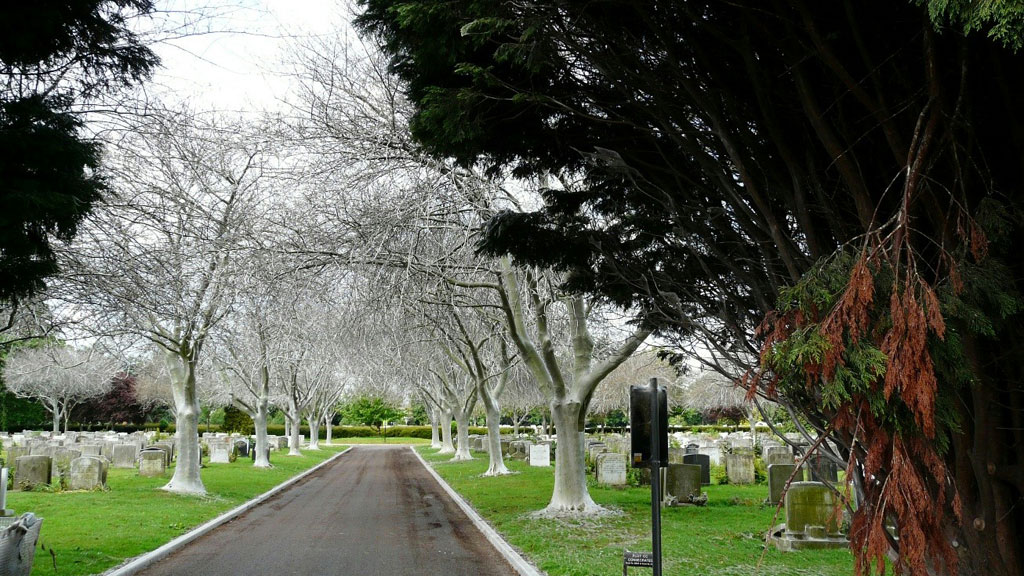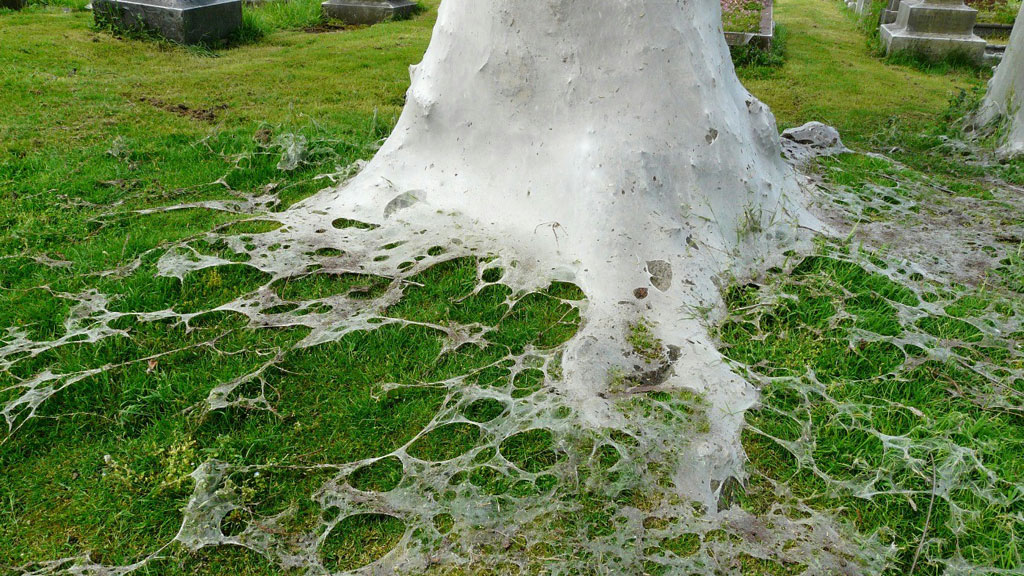Southend cemetery covered in ghostly moth webs
Trees in an Essex cemetery have been covered by a giant silvery blanket, described as “spooky” and “ghost-like” by locals. But the strange phenomenon is in fact the work of a legion of caterpillars.

Bird cherry ermine moth caterpillars (Yponomeuta evonymella) appeared a few weeks ago and now cover everything from shrubs and hedges to the tombstones in Sutton Road Cemetery in Southend-on-Sea.
Curator of natural history in the borough, Roger Payne told Channel 4 News: “The caterpillars work in boom and bust cycles. Their main predators are parasites and in particular the parasitic wasp which buries its eggs inside them.
“There appears to have been fewer of those this year hence the increase in the number of caterpillars.”
There are eight different varieties of ermine moth.
The bird cherry species is just one and is named after the tree it both feeds on and lays its eggs in. The caterpillars don’t harm the host they rely on to survive, but they are known to strip the trees entirely of their leaves when feeding.

Female bird cherry ermine moths only breed once a year.
They lay their eggs on the outer twigs of the tree and caterpillars will hatch anytime between spring and June.
Caterpillars emerge in order to feed on leaves. They then begin to weave a silk web in the tree around June time ahead of pupation – the stage where they will eventually transform into moths.
This thick, robust web helps to protect the caterpillars from predators and the weather when they are at their most vulnerable during metamorphosis.

Experts say the tiny moths have a short life-span, just a few days. They do feed on nectar but are nocturnal insects. They also make up the diet of birds and some mammals.
Mr Payne added: “This particular species of caterpillar is found in the UK but it’s commonly found in the north of Britain, so having them in Southend-on-Sea is unusual. Bird cherry trees are rare and we think possibly that female moths may well have migrated from the continent to these trees which were planted around 50 years ago.”
Bird cherry ermine moths are white with five rows of black dots on the forewing.